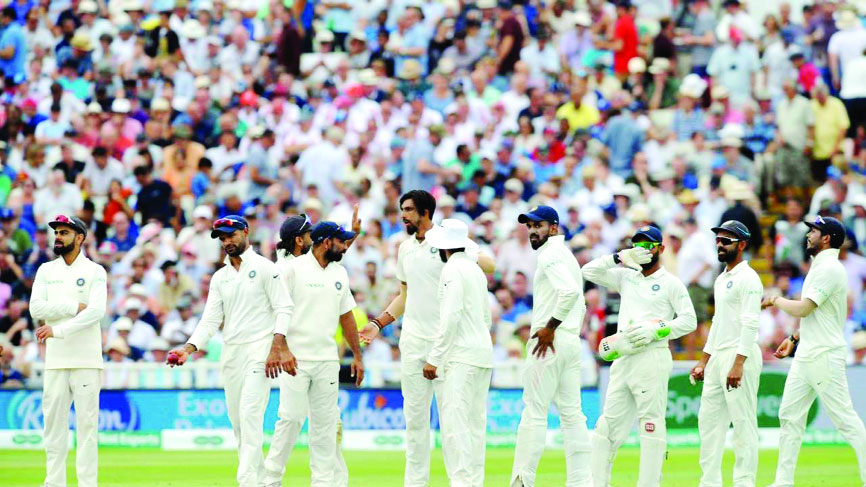The best way to watch the Indian Test team lose is to put them in a winning situation overseas
During the fourth innings of the first Test in Cape Town against South Africa earlier this year, India was set a modest target in challenging conditions. Part of the commentary team for the series, former South African great Jonty Rhodes commented, “How India bat in this innings will define how they bat in the rest of the series and on the tour to England and Australia later this year.” His words have turned out to be profoundly prophetic so far.
Good beginnings are crucial in Test cricket. Only the great West Indies team of the 1970s and 1980s were masters of winning from being behind the curve in a series. But even with them it was an exception. The great Australians of the 1990s and 2000s invariably won series by making a strong impression in the first Test of most series they played. Great victories in the first games were enough to deflate oppositions for the rest of the series. By the middle of most series, the Aussies had done and dusted most oppositions. First games define a series more often than not. Good teams realise it, great teams capitalise on it. India, though, have wanted to prove Jonty Rhodes right.
Behind both series losses lies the fact that perhaps the Board of Control for Cricket in India (BCCI) is working to maul Indian Test cricket performances overseas. India began the South Africa tour without a practice game and the one before the first Test at Edgbaston was a token. This showed utter lack of seriousness and how low in importance Test cricket was in the Indian mindset. It is something even the usually pro-India Sunil Gavaskar criticised.
India lost some unquestionably winnable games against a team that was a basket case with issues on and off the field: Openers in poor form; a captain in iffy touch; an all-rounder with a pending court appearance; an ageing seam bowling unit and untested second-in-line bowlers. Could one have asked for an easier opposition? As for India, one may have reckoned they’d have consolidated the biggest problem area after the Test series in South Africa: top order batting. But did it happen?
After this series, though, there is a greater credibility crisis over the International Cricket Council’s Test rankings. Number one teams are supposed to have at least an edge over their rivals. It is the opposite now. India is still the number one side after a 2-1 defeat in South Africa and a 4-1 defeat in England. This is a travesty of the sport’s rankings. Midway in the series India’s head coach Ravi Shastri had the gall to say that Indian had won three series abroad. He didn’t mention those were against weak teams like Sri Lanka and the West Indies: This is poor mental form.
Indian Test batting in demanding overseas conditions is the worst casualty of the Indian Premier League. In England (and South Africa), almost every batsman barring Kohli was called out for his technique and temperament. The two losses in South Africa and the two out of the four losses in England happened when the Indian team were in winning positions. They choked exactly like they have in the past and like their batting ancestors of yore. They don’t have the bloody-mindedness to guts it out when it matters. But batting masterclasses don’t happen in England even for their home batsmen without preparation.
Kohli spoke much about “intent” like he did in South Africa, but it now sounds misplaced. While he may have the game, skill and mental strength to mould his batting according to the opposition, the conditions and the game situation, his peers are mortals. Has he been unfair in assessing the individual capacity of his batsmen to perform under pressure? The way they batted when set a target, one doubts they’d even be able to chase 100 runs in the fourth innings under straining circumstances.
The bowlers got great praise for their sustained aggression. However, they too failed to deliver the killer blow twice at critical junctures in the series. Sean Curran and Adil Rashid made them pay with the bat. This pattern too is well established in Indian Test cricket history. During crunch moments, they have not produced yorkers they bring out in the shorter format. All this now makes Ishant Sharma a player who has been part of three consecutive Test tours to England where he has bowled very well and the series has been lost.
Ravi Shastri has now spoken of having proper tour games before the Test matches in Australia. It has taken two series to figure that basic fact an armchair cricket viewer will know. But even without their frontline batsmen like Steven Smith and David Warner, the Aussies have a bowling attack to rattle any batting line-up in home conditions. Except for Kohli, there is no assurance in India’s batting.
Therefore, prepare for another series loss in advance. Like they’d have had in the past, India will have their chances. And like they have in the past, the best way to watch them lose will be to put them in a winning situation. For it now seems they fear success more than failure. The former is new and scary; the latter is old and established. India’s Test cricketers are respectful of tradition.
(The writer teaches at the Jindal School of Liberal Arts & Humanities)


























